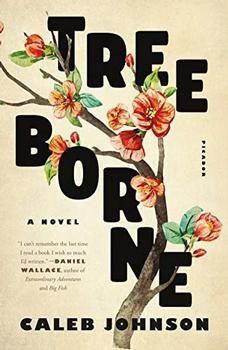Book Club Discussion Questions
Please be aware that this discussion guide will contain spoilers!
- When the novel begins Janie Treeborne is already old. She has finally decided it is time to tell many of her
stories. How does Janie's age influence the stories she tells and the ways in which she tells them?
- Treeborne is written in a distinct style that relies on a strong vernacular. How do elements of Johnson's
writing style evoke the way memory works in life and for characters in the novel? How does the novel's voice
impact the way you read and understand its characters?
- There is not a central plotline in Treeborne. Instead, Johnson moves around in time and across many
different narrative threads. How do characters such as Hugh, Maybelle, and Janie Treeborne change over
the course of the book? Can the same be said of characters such as Big Connie Ward, who serves as one of
the novel's antagonists?
- In the opening chapter, Janie Treeborne states that she will not abandon her home, even during the flood
that will inevitably follow the demolition of The Hernando de Soto Dam. What does this refusal tell you
about how Janie sees her home? What other characters have similar or contrasting views of home?
- Why does Janie Treeborne kidnap her aunt Tammy Treeborne Ragsdale? What does this decision have
to do with Janie's love for The Seven, and why does Ricky Birdsong go along with it?
- The character Loudermilk comes to the South in order to profit off the region and its artists. What
motivates Hugh Treeborne to trust this stranger? Why would he let Loudermilk leave town with his
assemblies?
- Starting in the 1930s, the Tennessee Valley Authority (TVA) altered the economic, cultural and physical
landscape of Alabama and other parts of the deep, rural South. In what ways does The Authority in Treeborne alter Elberta's economic, cultural, and physical landscape? How do these alterations influence the characters, particularly Hugh Treeborne and Lee Malone?
- Is Treeborne a Southern novel? What elements make a novel distinctly Southern?
- The mythology of the Spanish conquistador Hernando de Soto looms large in this novel. In what ways
do myths related to de Soto influence the characters and the town of Elberta itself?
- At the time, Hugh Treeborne doesn't quite seem to fully understand why he murders Velston and the
birthmarked man, or why he disinters the corpses from the soon-to-be-flooded cemetery. What may have
motivated Hugh to take these irreparable actions? What do his actions communicate about Hugh as a
character?
- The magic surrounding the character Crusoe is never explicitly explained. Why do you think Johnson
made this decision? How do you interpret Johnson's use of magical realism in this novel?
- Nearly all of Treeborne takes place in the Jim Crow South. In what ways do the different characters
understand and view race? Do these views change across the three main timelines?
- Hugh Treeborne's assemblies are in part inspired by the work of the Alabama artist Thornton Dial.
Why does Hugh refer to his art as assemblies? How do the assemblies mirror or contradict the stories Janie
tells throughout the novel?
- Tammy Treeborne Ragsdale imagines one day leaving Elberta and going to Hollywood to become a
film star. Aside from fame, why does she have this dream? What or who keeps her from realizing it?
- Lee Malone plays music in churches and in bars, in Elberta and outside of it. He seems to be in a
constant back and forth with his creativity. How is Lee's relationship to music similar to or different from
his relationship with other characters in the novel, especially Hugh and Maybelle Treeborne?
- Ricky Birdsong has spells where he slips backward into his past. How is his relationship to the past
similar to and different than other characters' relationship to it?
Unless otherwise stated, this discussion guide is reprinted with the permission of Picador.
Any page references refer to a USA edition of the book, usually the trade paperback version, and may vary in other editions.




